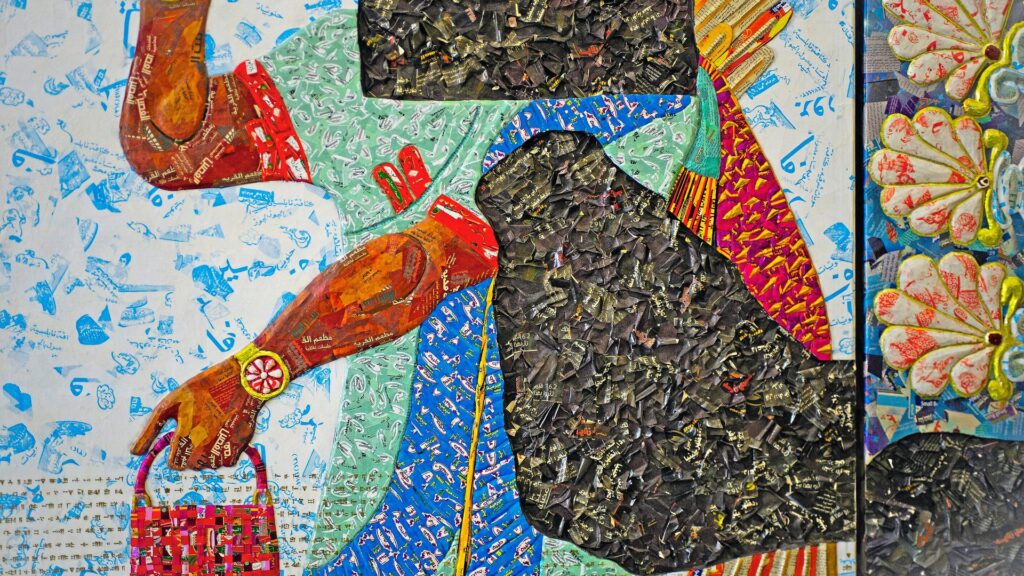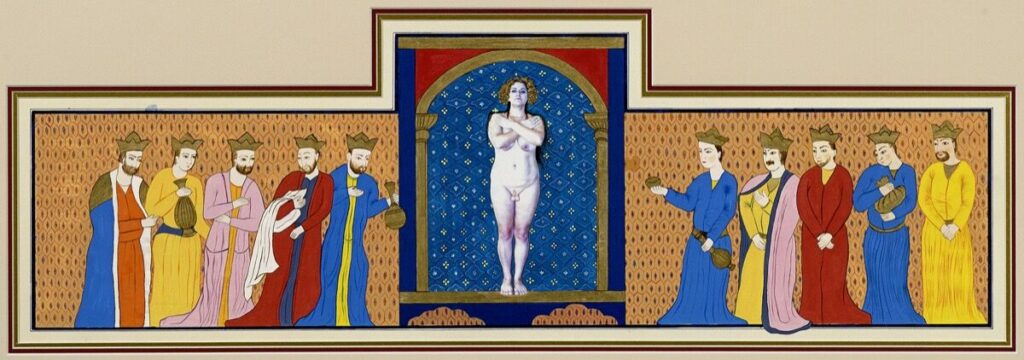Descendant of an Iraqi Jewish family forced to flee their country, American artist Michael Rakowitz uses contemporary materials from Arabic culture such as food packaging and newspapers to reconstruct ancient objects that Iraq lost during the war.
The Invisible Enemy Should Not Exist (Aj-ibur-shapu), borrows its name from a street dating back to 574 BC which ran through the gate of Ishtar, in ancient Babylon. One translation of the name is “may the arrogant not prevail”. Rakowitz’s work, which he describes as showing “ghosts that have come to haunt Western museums” is devoid of this arrogance. He acknowledges the imperfections of his reconstructions – as well as the impossibility to repair the past.
The Luxembourg Times
Renowned US painter David Lenz paints people usually marginalised by society and in an exclusive interview with the Luxembourg Times spoke about his work during a visit to the country where one of his award-winning paintings now hangs.
Lenz is dedicated to painting portraits of people with disabilities, as he believes in the inherent interconnectedness of the universe and challenges the way the society reacts to people who happen to be “different”.
“The first painting I did of a person with a disability was of [my son] Sam,” Lenz said during an interview with the Luxembourg Times.
Renowned US painter David Lenz paints people usually marginalised by society and in an exclusive interview with the Luxembourg Times spoke about his work during a visit to the country where one of his award-winning paintings now hangs.
Lenz is dedicated to painting portraits of people with disabilities, as he believes in the inherent interconnectedness of the universe and challenges the way the society reacts to people who happen to be “different”.
“The first painting I did of a person with a disability was of [my son] Sam,” Lenz said during an interview with the Luxembourg Times.
When Princess Diana died in 1997, Alison Jackson got a gun and started shooting at the image of Diana to see if she could erase it from her memory. She couldn’t, and neither could the public.
Newspapers elaborated on Diana’s death describing her body parts in detail, which intrigued Jackson. Testing the extent of this “mass voyeurism”, Jackson used a look-a-like to create fake images of Diana to (successfully) provoke a public reaction.
A British contemporary artist with a BAFTA award, Jackson works at the fine line between real and imaginary, questioning the reliability of our perception. “Fake news” is Jackson’s artistic language.
The Luxembourg Times
This past June, a Turkish woman took to Twitter with the following statement: “My husband can work if he wants.” The post came after another round of grim news stories documenting domestic violence against women, as well as incidents of femicide. More Turkish women joined the chorus on Twitter, posting similar messages, such as: “The most beautiful career for a man is fatherhood.” Posts like these are meant to reverse and mock the discriminating and humiliating remarks used to hold Turkish women in an inferior social position to men. And, by doing so, Turkish women hope to spur an ongoing conversation about the dangers they face due to their gender.
Artsy
This past June, a Turkish woman took to Twitter with the following statement: “My husband can work if he wants.” The post came after another round of grim news stories documenting domestic violence against women, as well as incidents of femicide. More Turkish women joined the chorus on Twitter, posting similar messages, such as: “The most beautiful career for a man is fatherhood.” Posts like these are meant to reverse and mock the discriminating and humiliating remarks used to hold Turkish women in an inferior social position to men. And, by doing so, Turkish women hope to spur an ongoing conversation about the dangers they face due to their gender.
Artsy
Luxembourg’s contemporary art museum Mudam hosts a remarkable exhibition of one of the most influential and controversial American artists of the postwar period, Robert Morris, curated by a close collaborator of the artist who died in 2018.
The Perceiving Body demonstrates the radical new ideas that underlie Morris’s early works from the 1960s and 1970s. The sculptor, conceptual artist and writer, born in 1931, was crucial in the development of minimalism, land-art and process art in the 1960s.
The Luxembourg Times
Selected Articles
US Artist Paints for Inclusion – The Luxembourg Times
How Artists in Turkey Are Responding to Violence Against Women – Artsy
Treasures Iraq Lost to Isis – The Luxembourg Times
Mudam Hosts a Series of Investigations in 1960s American Art – The Luxembourg Times
How the Camera Lies to You, and Why You Don’t Care – The Luxembourg Times
How Children’s Games are Becoming Historical Artifacts – The Luxembourg Times
Artist, Queer, Refugee – The Luxembourg Times
Arles Photography Festival 2023 – The Luxembourg Times
Tony Cragg, Nosbaum Reding Gallery – The Luxembourg Times
Ölüme İyi Gelen Sergi (The Exhibition that Cures Death) – Hürriyet
Esmer Ay: Afro-Türklerin Muğlak Geçmişi (The Mysterious Past of Afro-Turks) – Radikal




